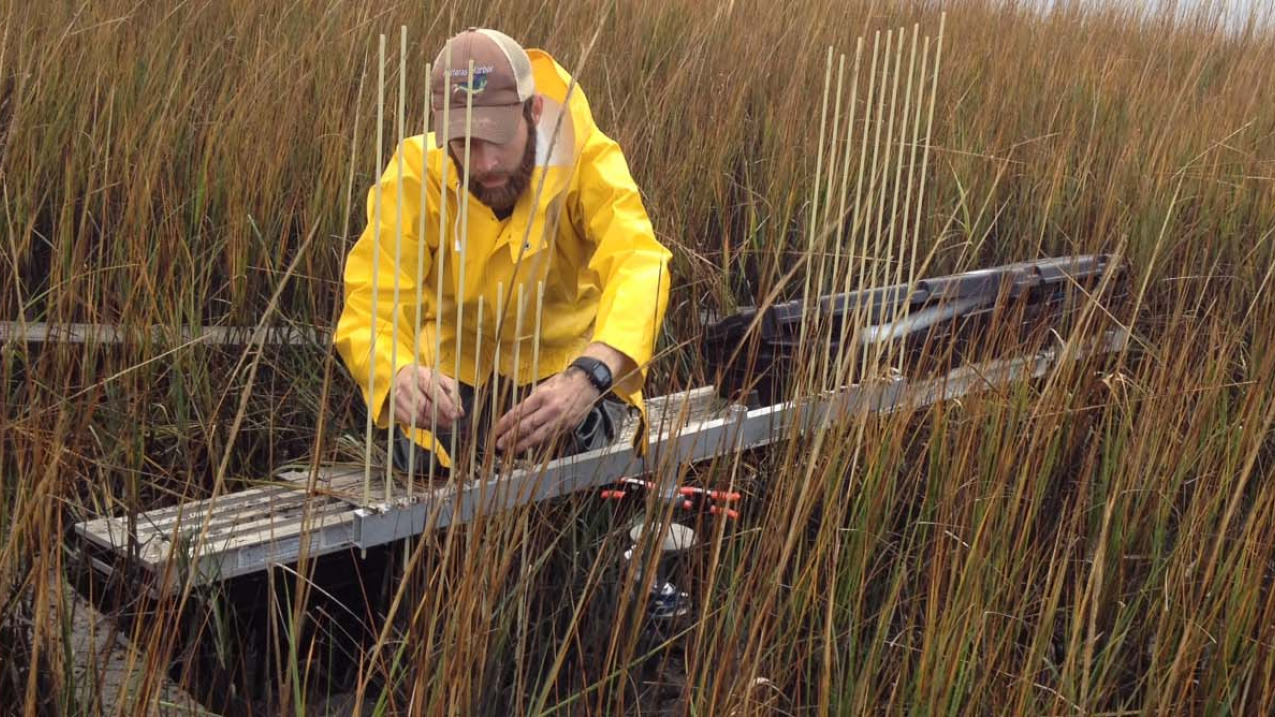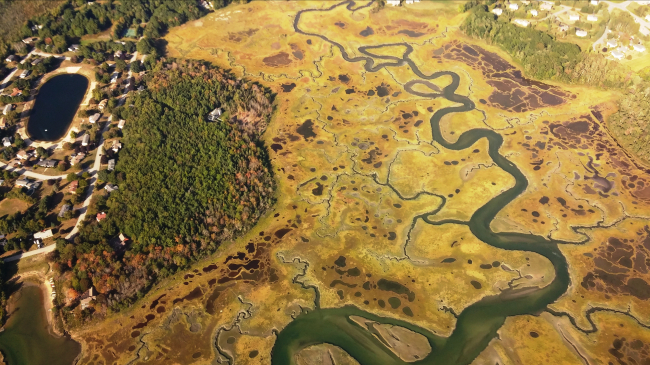Baseline established to track effects of climate change
A NOAA-sponsored study shows that Pacific coast tidal marshes are more resistant to rising sea levels from climate change than marshes in the Atlantic. Pacific marshes are generally at higher elevations than Atlantic marshes, and Pacific oceanographic circulation tends to push water away from the coast, reducing the effect of sea level rise.

Using a surface elevation table to measure marsh elevations at the North Carolina Reserve. (Image credit: North Carolina NERRS)
The study, conducted by NOAA’s National Estuarine Research Reserve System (NERRS), established a national baseline for monitoring the effects of climate change on estuaries. NERRS conducted this study at 16 sites in 13 coastal states.
Coastal communities can use this marsh resilience assessment, and future studies based on it, as a guide to help them and their leaders determine the appropriate steps needed to protect their marshes. Examples include:
-
Acquire land near highly resilient marshes as buffer zones.
-
Reconnect moderately resilient marshes to the rivers that nourish them with sediment.
-
Move the least resilient marshes to higher ground.
The National Estuarine Research Reserve System is a network of 28 coastal sites designated to protect and study estuarine systems. Established through the Coastal Zone Management Act, the reserves represent a partnership program between NOAA and coastal states. NOAA provides funding and national guidance, and each site is managed on a daily basis by a lead state agency or university with input from local partners.
Media contact:
Donna McCaskill, 843-740-1271



